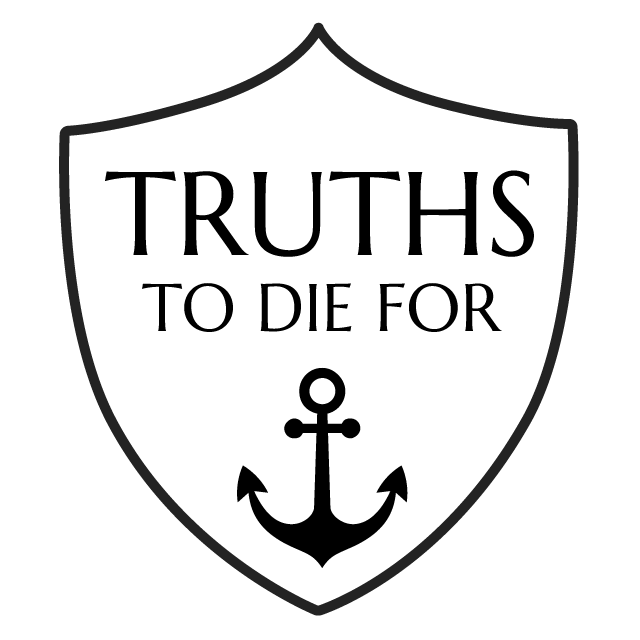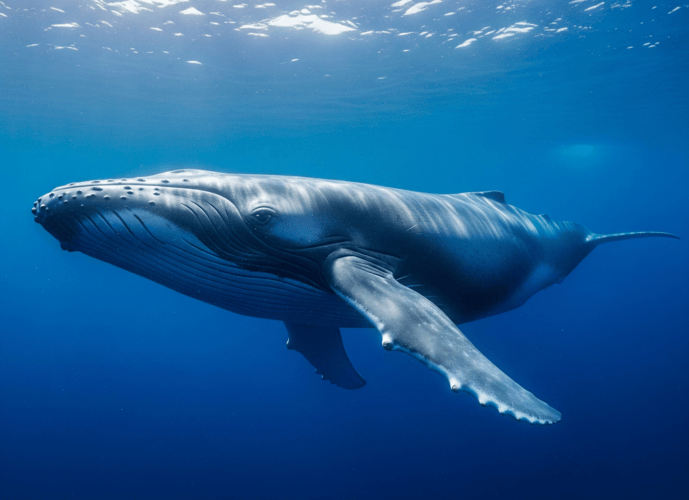Blue Whales: Mammoth Icons of Intelligent Design
Imagine an animal so massive its heart alone weighs as much as a small car, yet so precisely engineered it can dive to crushing depths, navigate thousands of miles without a compass, and communicate across entire ocean basins. The blue whale—Earth’s largest creature to have ever lived—presents us with a biological marvel that challenges our understanding of how such complexity could arise through undirected processes.
At up to 100 feet long and weighing as much as 200 tonnes, blue whales dwarf even the largest dinosaurs. But their true significance lies not in their size, but in the intricate, interdependent systems that make their existence possible. These gentle giants serve as compelling evidence for intelligent design, demonstrating what biochemist Michael Behe termed “irreducible complexity”—biological systems so intricately coordinated that they cannot function if any component is removed or underdeveloped.
THE CARDIOVASCULAR ENGINEERING MARVEL
Consider the blue whale’s circulatory system, a masterpiece of biological engineering that would make human designers envious. The heart, weighing over 400 pounds and measuring six feet in length, pumps more than 15,000 pounds of blood through a network of vessels so large that a child could crawl through the main arteries. This isn’t simply a scaled-up version of a smaller mammal’s heart—it’s a precision-engineered system requiring exact proportions, specialised valves, and coordinated electrical impulses.
The mathematical precision is staggering. The heart must beat at exactly the right rate to maintain blood pressure across a 100-foot body while accommodating the dramatic pressure changes during deep dives. Too fast, and the system fails from excessive pressure; too slow, and oxygen delivery becomes inadequate. The margin for error is virtually non-existent. Yet this system works flawlessly throughout the whale’s lifespan.
How could such precision arise through random mutations? The cardiovascular system demonstrates irreducible complexity because every component—from the specialised heart muscle to the precisely calibrated blood vessels—must function perfectly from the moment of birth. A partially developed system would be fatal, leaving no opportunity for gradual improvement.
THE FEEDING MECHANISM: A STUDY IN COORDINATED COMPLEXITY
The blue whale’s feeding system presents another compelling argument for design. These massive creatures survive exclusively on tiny krill, requiring a feeding mechanism of extraordinary sophistication. The baleen system consists of 300-400 plates on each side of the mouth, each plate containing thousands of bristles arranged in precise patterns to filter microscopic prey from seawater.
But the baleen plates are only part of the story. The whale’s throat contains 60-90 ventral pleats that expand like an accordion, allowing the mouth to hold up to 16,000 gallons of water—equivalent to the volume of a large swimming pool. The tongue, weighing as much as an elephant, works in perfect coordination with specialised muscles to force water through the baleen while retaining the krill.
This feeding system requires multiple simultaneous innovations: the baleen plates, the expandable throat pleats, the massive tongue, the coordinated muscle systems, and the behavioural knowledge of where and how to feed. Remove any component, and the system fails catastrophically. A whale with throat pleats but no baleen would starve. Baleen without the expandable throat would be useless. The coordinated nature of these features strongly suggests they arose together as part of a unified design plan.
RESPIRATORY MASTERY: DIVING DEEP BY DESIGN
The blue whale’s respiratory system showcases another level of engineering sophistication. Their lungs can hold over 1,320 gallons of air—enough to fill a small room—but the real marvel lies in their diving adaptations. Blue whales can dive to depths exceeding 1,600 feet, where water pressure reaches crushing levels that would destroy most air-breathing creatures.
The solution involves multiple coordinated systems working in perfect harmony. Specialised blood chemistry allows for maximum oxygen storage in haemoglobin and myoglobin. The rib cage is designed to collapse under pressure without damaging internal organs. Air spaces in the lungs and ears are equipped with mechanisms to prevent catastrophic compression. Most remarkably, the whale’s entire cardiovascular system adjusts during dives, redirecting blood flow to essential organs while safely managing nitrogen absorption to prevent decompression sickness.
This diving capability requires foresight—the integration of multiple systems that must all function perfectly to prevent death. The gradual development of these features would provide no survival advantage until all components were fully operational, making evolutionary explanations highly problematic.
NAVIGATION AND COMMUNICATION: BUILT-IN SONAR AND GPS
Blue whales undertake some of the longest migrations in the animal kingdom, traveling over 12,000 miles annually between feeding and breeding grounds. They accomplish this feat without maps, compasses, or GPS systems, yet arrive at their destinations with remarkable precision year after year.
Their navigation system appears to utilise multiple complementary methods: magnetic field detection, celestial navigation, and acoustic landmarks. But perhaps most impressive is their communication system—a sophisticated acoustic network that operates across hundreds of miles of ocean. Blue whales produce low-frequency calls at around 14-35 Hz, below the range of human hearing, that can travel across entire ocean basins.
The acoustic engineering required for this communication system is extraordinary. The whale must produce sounds at precisely the right frequency to maximise transmission distance while minimising energy expenditure. The sounds must be directional for efficient communication and must be coordinated with the whale’s migration patterns and social behaviours.
This communication system demonstrates the hallmarks of intelligent design: purpose-driven functionality, efficient use of resources, and integration with other biological systems. The precision required for long-distance acoustic communication suggests engineering foresight rather than random development.
REPRODUCTIVE PRECISION: NO ROOM FOR ERROR
The blue whale’s reproductive system presents perhaps the most compelling evidence for design. After an 11-12 month gestation, calves are born tail-first underwater—a critical adaptation that prevents drowning during birth. The 23-foot, 6,000-pound newborns must immediately coordinate swimming, breathing, and nursing behaviours—with no opportunity for learning or practice.
The mother’s mammary system produces over 600 gallons of milk daily with a fat content of 30-50%—precisely calibrated for rapid growth in the marine environment. The calf must double its length and increase its weight eightfold within the first year, requiring perfect coordination between maternal milk production and calf development.
This reproductive system allows no gradual development. Every component must function perfectly from birth, or the calf dies. The precision of timing, the coordination of multiple systems, and the immediate functionality required—all of these point to purposeful design rather than incremental evolution.
THE FOSSIL RECORD PROBLEM
Evolutionary theory predicts numerous transitional forms showing the gradual development of whale characteristics. However, the fossil record tells a different story. Modern whales appear suddenly in the geological record with their complex systems fully formed and functional. The proposed evolutionary pathway from land mammals to whales requires dramatic changes in virtually every body system, yet the transitional forms showing these gradual changes are notably absent.
The mathematical probability of coordinated mutations producing the integrated systems we observe in blue whales approaches zero. The simultaneous development of cardiovascular, respiratory, digestive, reproductive, and nervous systems—all scaled to accommodate massive size—requires a level of coordination that random processes cannot provide.
THE INESCAPABLE INFERENCE
Blue whales present us with systems of staggering complexity that demonstrate the hallmarks of intelligent design: purpose-driven functionality, irreducible complexity, and mathematical precision. Their cardiovascular system rivals the most sophisticated human engineering projects. Their feeding mechanism requires multiple coordinated innovations. Their diving capabilities demand integrated solutions to complex physiological challenges. Their navigation and communication systems demonstrate sophisticated information processing.
The coordinated nature of these systems, their immediate functionality requirements, and the mathematical improbability of their random development all point to a common conclusion: blue whales are the product of intelligent design. They stand as mammoth icons of irreducible complexity, testifying to the wisdom and power of their Creator.
In a world where we recognise design in human artefacts far less complex than a blue whale, the most reasonable inference is that these magnificent creatures bear the unmistakable signature of intelligent design. Their very existence calls us to marvel at the intricate craftsmanship evident throughout the natural world.
BLUE WHALES: ICONS OF INTELLIGENT DESIGN—RELATED FAQs
What do creationist biologists say about blue whale complexity? Leading creation scientists like Dr Jerry Bergman and Dr Jonathan Sarfati argue blue whales demonstrate “specified complexity” that cannot arise through undirected processes. They point to the mathematical impossibility of coordinated mutations producing integrated systems, emphasising the whale’s design features require foresight and planning that only an intelligent designer could provide.
- How do blue whales compare to human-engineered submarines in terms of design efficiency? Blue whales far exceed human submarine technology in virtually every metric—diving depth relative to size, energy efficiency, materials engineering, and operational lifespan. While our best submarines require constant maintenance and have limited operational ranges, blue whales operate autonomously for decades with self-repair capabilities and nearly 100% efficiency in their marine environment.
- Could blue whales have evolved from smaller whale ancestors through simple scaling? Scaling up a smaller whale design would create insurmountable engineering problems known as the “square-cube law”—as size increases, volume grows faster than surface area, creating heat, structural, and metabolic challenges. Blue whales required entirely new solutions for circulation, thermoregulation, and structural support that simple scaling cannot explain.
How does the blue whale’s brain demonstrate design? The blue whale’s brain, weighing 15-20 pounds, contains specialised regions for processing complex acoustic information, coordinating massive body movements, and managing intricate social behaviours. The brain’s neural architecture is precisely calibrated for the whale’s lifestyle, with dedicated processing centres that appear purpose-built for their specific functions.
- How do blue whales maintain their massive size on a diet of tiny krill? This presents what some call the “efficiency paradox”—the world’s largest animal surviving on some of the ocean’s smallest prey requires extraordinary metabolic optimisation. The whale’s feeding strategy, digestive system, and energy storage mechanisms are so precisely calibrated that they achieve near-perfect efficiency, converting tiny krill into massive body mass with minimal waste.
- What challenges do blue whales face that point to original design rather than adaptation? Blue whales appear optimally designed for pre-Fall ocean conditions, with some features that seem “over-engineered” for current environments. Their massive size may have been ideal for different ocean chemistry or climate conditions, suggesting they were designed for an originally perfect world rather than adapting to current challenging conditions.
How do blue whale calves survive their first year without extended parental teaching? Blue whale calves demonstrate remarkable “pre-programmed” behaviours—they instinctively know how to swim, breathe, nurse, and even begin basic feeding behaviours without extended learning periods. This suggests their behaviours are encoded in their design rather than learned through experience, pointing to intelligent programming rather than evolved instincts.
BLUE WHALES: ICONS OF INTELLIGENT DESIGN—OUR RELATED POSTS
- Intelligent Design: Is It A God of the Gaps Argument?
- The Woodpecker’s Design: How Nature’s Headbanger Defies Evolution
- Nature’s Perfect Motor: How the Bacterial Flagellum Defies Evolution
- Too Perfect to Be Random: The Giraffe’s Remarkable Design
- Evidence that Glows: How Bioluminescence Reveals Design
Editor's Pick

Why Do People Hate the Doctrine of Election?
…WHEN THEY REALLY SHOULDN’T Few Bible doctrines provoke stronger reactions than election. The idea that God chose some for salvation [...]

The Doctrine of Providence: Does God Really Govern All Things?
You’re sitting in the doctor’s office when the diagnosis lands like a thunderclap. Your mind races: Why this? Why now? [...]

No Decay, No Defeat: What It Means That Christ’s Body Saw No Corruption
On the Day of Pentecost, Peter stood before thousands and made a startling claim: David's body decayed in the tomb, [...]
SUPPORT US:
Feel the Holy Spirit's gentle nudge to partner with us?
Donate Online:
Account Name: TRUTHS TO DIE FOR FOUNDATION
Account Number: 10243565459
Bank IFSC: IDFB0043391
Bank Name: IDFC FIRST BANK






